2023 Bull Market Pick: 2008–15 Audi R8
Welcome back to the Hagerty Bull Market List, our annual deep dive into the collector cars (and bikes) climbing the value ranks. This vehicle is one of 11 chosen for the 2023 installment of the List. To see the other 10, click here.
It’s easy to forget what a trainwreck Lamborghini was through the 1970s and up until 1998, when Audi bought the Italian carmaker for a trifling $110 million.
The first offspring of this relationship was the Lamborghini Gallardo, with a mid-mounted 5.0-liter V-10 good for 493 horsepower. Audi was next, using the Gallardo as the basis for its first supercar, the R8. Under its aluminum skin, the R8 shared mechanical bones with the Gallardo, its aluminum spaceframe similar but a sort of second draft that improved stiffness and lowered cost. The two cars also shared the Quattro all-wheel-drive system, with power sent to the front wheels via a viscous coupling. Transmission choices were either a six-speed manual or a computerized, paddle-shifted R tronic automatic. Initially, the R8 used the 420-hp, 4.2-liter V-8 from the Audi RS4; the Lambo’s V-10 was offered later. A glass panel makes it easy to admire the engine with the lid closed, and nifty LED lighting illuminates it at night.
Open the driver’s door and you see immediately what makes this car so deeply desirable—a manual shifter sprouting from a metal gate. The R8 is the last production car available with that quintessential Italian design motif, which dates to numerous classic Ferraris as well as other vintage Lambos. But the R8 is cheaper than those by a bunch. That shift lever is made from milled aluminum and is lovely to use. Clack-clack through its gates quickly enough and with the V-8, you’ll hit 60 mph in 4.3 seconds, just 3.2 seconds with the V-10.
With a front-to-rear weight distribution of 44/56 percent, the R8 avoids the inherent understeer associated with most all-wheel-drive cars. The torque split is biased toward the rear, with never more than 35 percent of power going to the front tires. The car’s 104.3-inch-long wheelbase (almost a foot longer than the same-vintage 911’s), means the R8 interior has more leg-, shoulder-, and headroom than a 911 or even a Mercedes SL of the period. Bonus: There’s room behind the seats for a pair of golf bags.
On the exterior, the R8 rounds off the sharp, angular edges of its Gallardo cousin, and it bulges muscularity in all the right places. Time has done little, however, to soften the visual impact of the fixed panels behind the doors that Audi named “side blades.” Available either in colors that contrasted with the body or in carbon fiber, they remain controversial, some loving this avant-garde flourish, some thinking they give the R8 a heaviness to its profile and impede rear visibility.
From behind the steering wheel, the traditional round dials remind you of how simple and straightforward instrument panels were before digital gimcrackery ran rampant in vehicle interiors. All three pedals are well placed, and the flat-bottomed steering wheel tells you how well the front tires sprechen with the road when you’re hustling the R8 through corners. With supercar performance paired with the livability of a daily driver, the Audi R8 might just be the collector car to have if you could only have one.
Leave it to the Germans to make the perfect Italian car.
***
2011 Audi R8 5.2
Highs: Italian performance with a German accent; beautifully balanced handling; did we mention the gated shifter?
Lows: Controversial profile; poor rear visibility; R tronic automatic to be avoided.
Price range: #1 – $216,000 #2 – $172,800 #3 – $118,000 #4 – $91,500
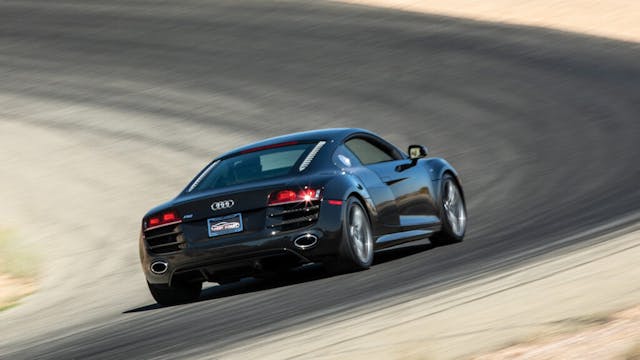
HAGERTY AUTO INTELLIGENCE SAYS:
All generations of enthusiasts appreciate the R8, and interest is growing. Insurance policy growth is more than three times faster than the Hagerty average over the past five years. Lookups on Hagerty Valuation Tools have doubled in the past 12 months, and they lead lookups for the similar Lamborghini Gallardo. R8 values are up 37 percent since 2019, and with growing demand, further appreciation is likely.
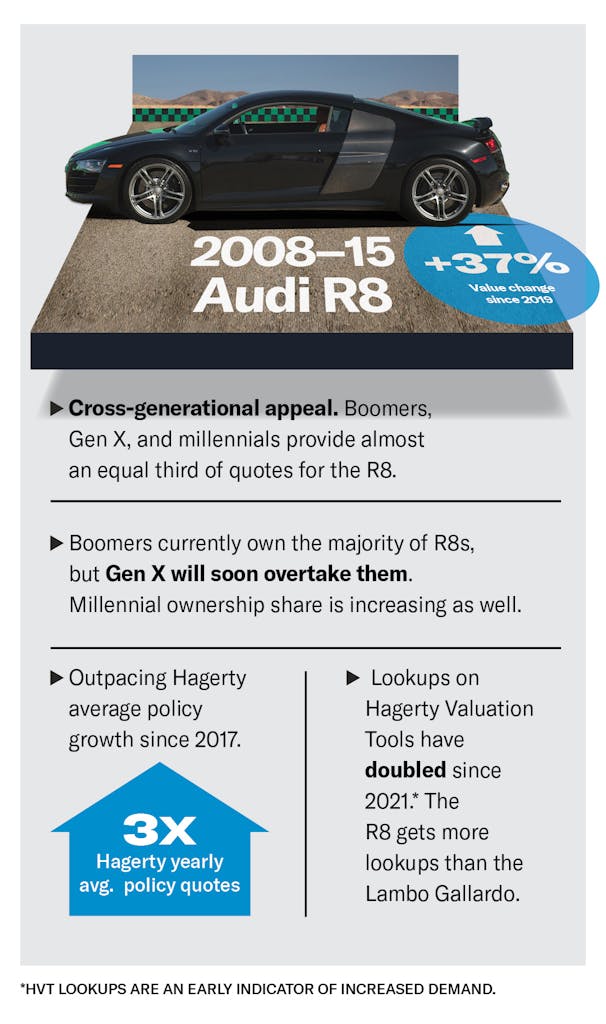
Check out the Hagerty Media homepage so you don’t miss a single story, or better yet, bookmark it.
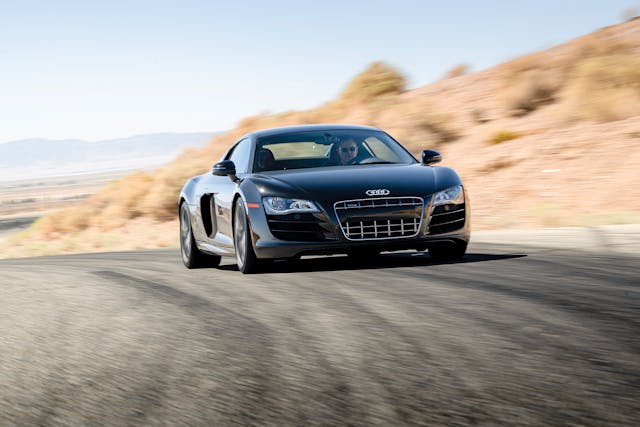
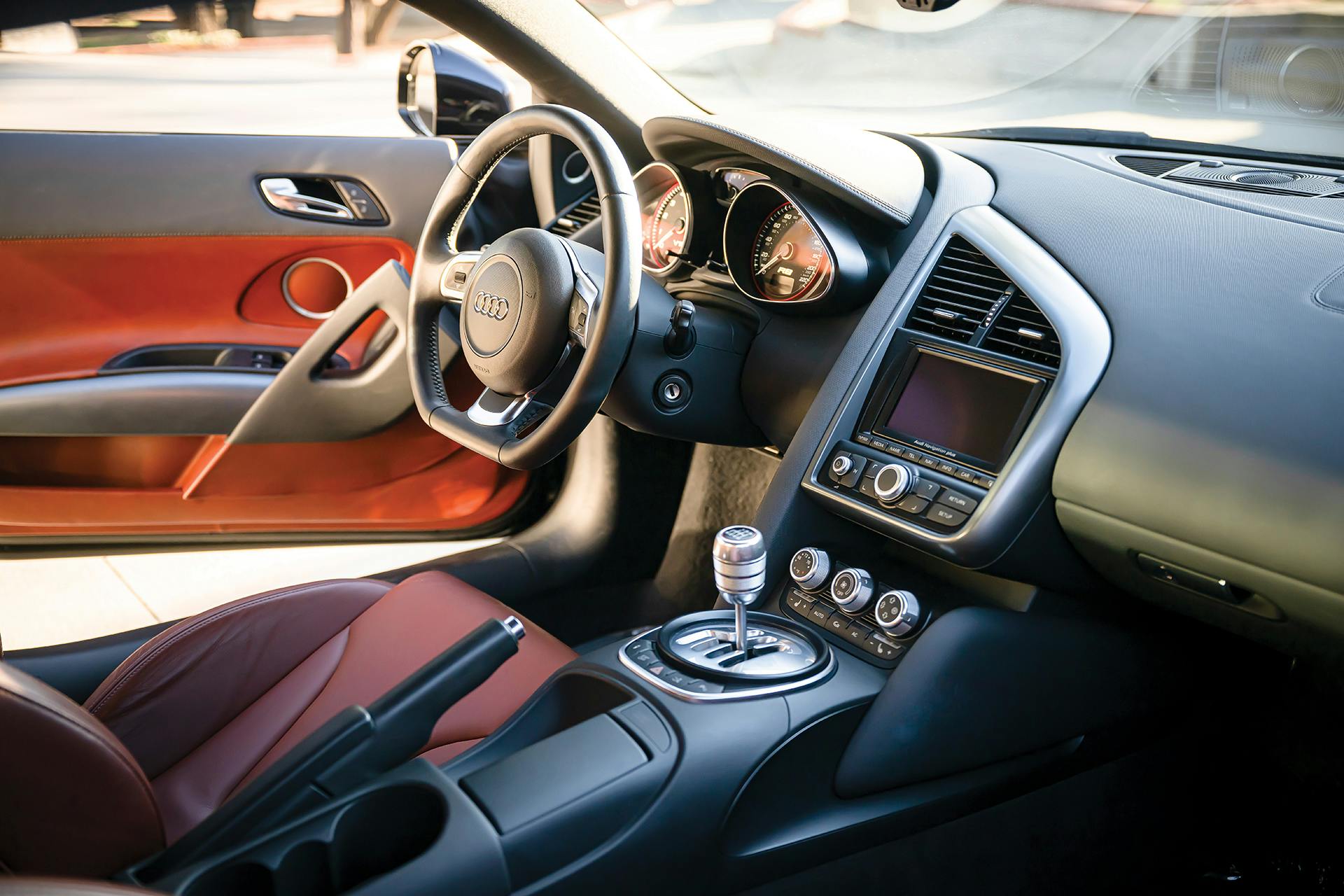
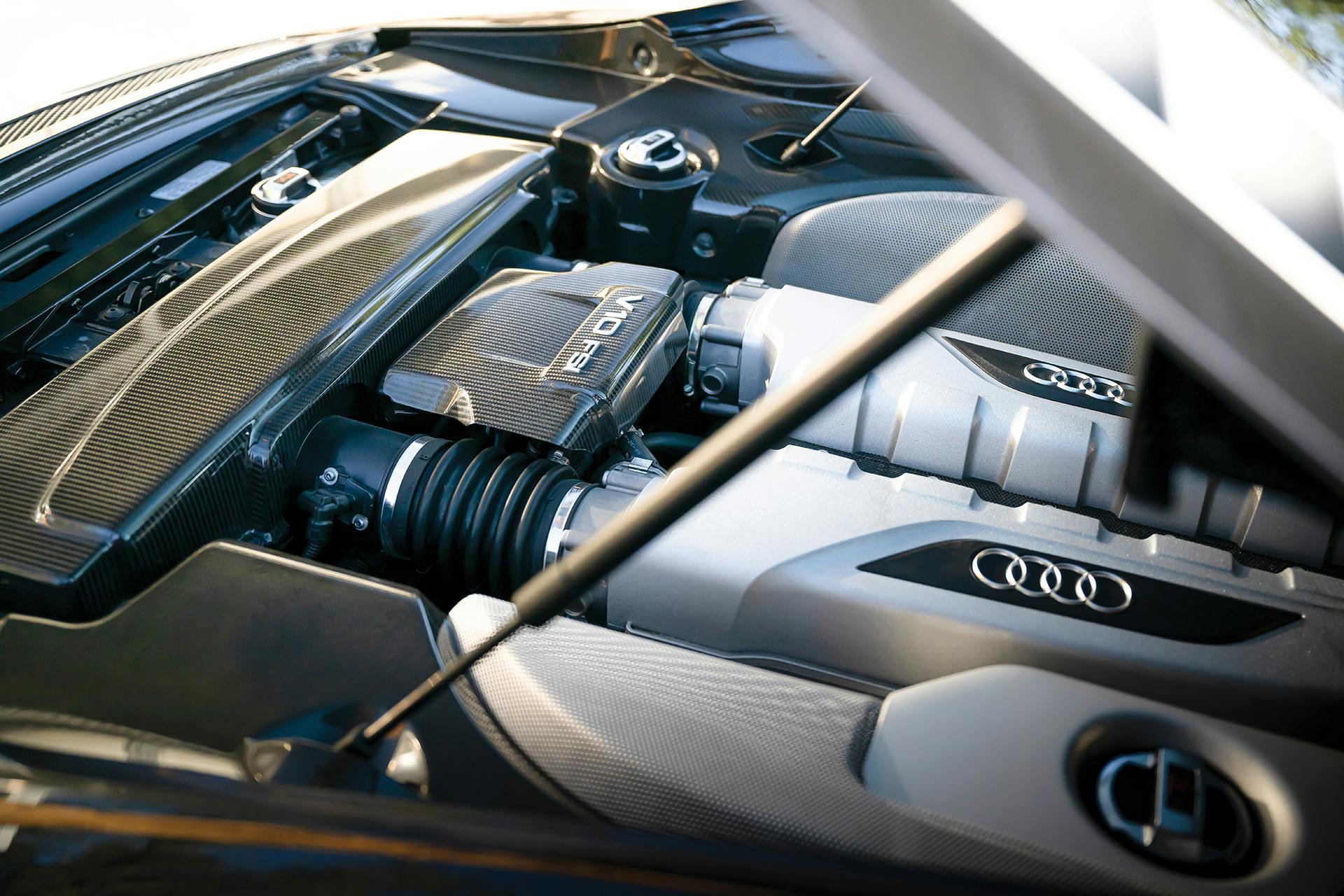
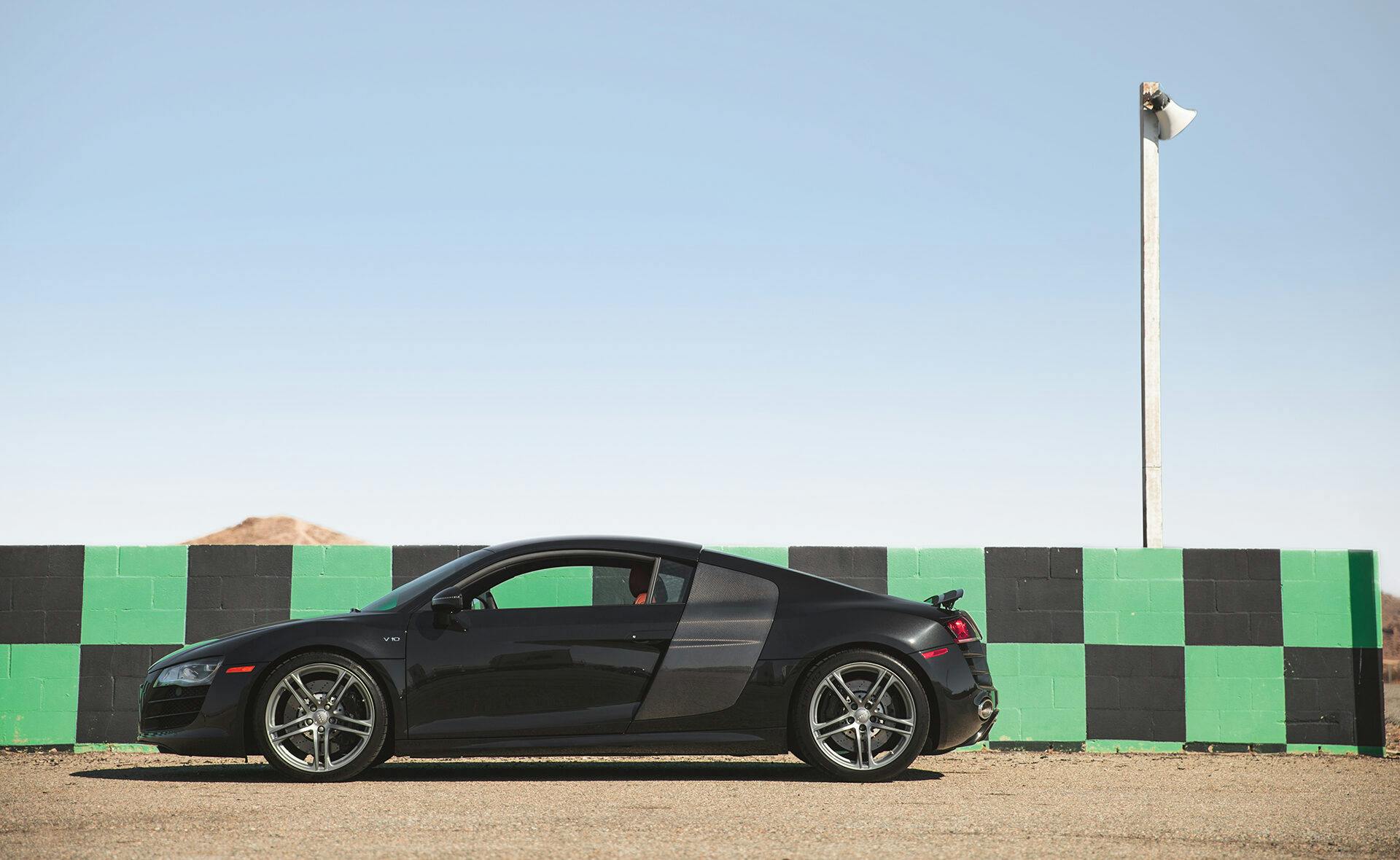


Any reason why the tripronic is so bad? I’m guessing it’s because it’s paddle shifter is slow?
It isn’t a Tiptronic but a dual clutch R-Tronic, S-Tronic, DSG. They are pretty reliable and the later models had a lot of improvements which can all be retrofitted to the older units (Mechatronics & Electric circuit boards).
I think the issue is that the R-Tronic is an automated version of the manual box, so it has a single clutch and is not as smooth or ‘snappy’ as the more modern dual clutch DSG type of gearbox. They can actually drive pretty well but there is, to some degree, a knack of driving one smoothly and getting it to shift nicely. Especially if you’re used to the DSG style transmission it can feel a bit slow and clunky.
I am a R8 fan and have had four prior to my current 2015 Carbon Spyder ( one of 16 ) .
The run up in prices especially the manual gearbox version is not sustainable. Flippers are getting an education as shown by recent BAT results .
I think Italian cars mostly have colotty’-tranies, Audi also owned by VW uses ZF and ZP.tranies they done some amazing things over the years, and the Porsche with the intermediate trany !!
I may be in the minority but I never liked the side blade on these cars. It visually stuck out too much. I preferred it to be body colored myself.